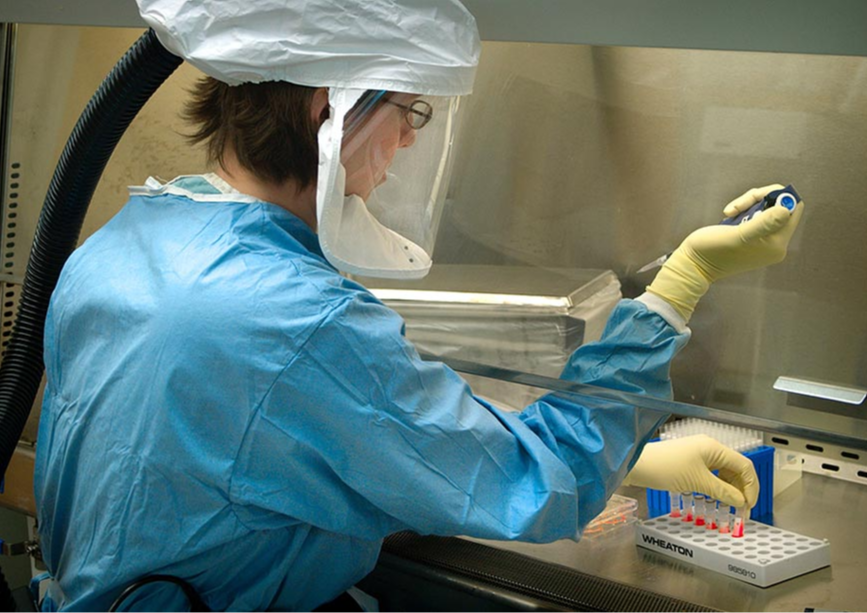-
CENTRES
Progammes & Centres
Location
The year 2023 has witnessed significant advancements in space exploration. With these remarkable achievements come evolving guidelines to safeguard Earth and extraterrestrial environments.

With India’s mission to the moon, Chandrayaan-3, to NASA’s James Webb Space Telescope identifying carbon dioxide on Jupiter’s moon Europa, 2023 had been a significant year for space exploration. In early October 2023, the OSIRIS-rex explorer also gathered and returned with asteroid samples that may hold the answers to the origins of life.
In addition to space exploration, different, including National Aeronautics and Space Administration (NASA) space programmes have evolved their assisting guidelines and policies. In April 2023, the Committee on Space Research (COSPAR) Panel on Planetary Protection met to discuss Planetary Protection Policies, their impending need and future scope.
COSPAR Bureau approved its Policy on Planetary Protection (PPP), in June 2021. The Policy covers the scope of bioburden on Earth and outer space environments through space exploration programmes, the range of explored environments and the contamination of returning samples. Under the PPP, many space programmes are undersigned, including NASA, the Indian Space Research Organisation (ISRO), and the Japan Aerospace Exploration Agency (JAXA).
The Policy covers the scope of bioburden on Earth and outer space environments through space exploration programmes, the range of explored environments and the contamination of returning samples.
The PPP enforces standards delineating the comprehensive technical specifications that must be adhered to at every stage of a mission's lifespan. This includes aspects such as mission classification, the preservation of biological and organic materials, procedures for assembly and testing, prevention of contamination through unintentional contact, the supervision of biological contamination in robotic missions, the handling of mission closure, and it provides an in-depth explanation of the typical spore assay protocol.
With space exploration and space sample studies becoming more prevalent, it is essential to establish Biosafety labs[1] that can host these samples to ensure that the samples returning are not contaminated by the atmosphere and interactions and that any extraterrestrial matter does not contaminate the atmosphere.
In the undersigned for COSPAR, the European Union (EU) uses a “clean tent” in locations of launch and crash to ensure minimal contamination. The EU has also launched the International Planetary Protection Handbook that elaborates on the need for planetary protection and alliances to COSPAR.
Japan’s Institute of Space and Astronautical Science (ISAS) and Department of Safety and Mission Assurance (S&MA) have standards for planetary protection that assist JAXA in responsible space exploration.
In the US, NASA has a Biosafety Review Board that assesses the need for different biosafety levels of collected samples and hosts them in biosafety labs on the International Space Station. However, a new requirement is imminent, with NASA's search for organic materials and living organisms outside Earth.
With the Mars Mission by NASA aiming to return with samples by 2033, there is a need for biosafety labs that can ensure biohazardous materials can be stored without risk to human health and the environment. To analyse samples returning from Mars, NASA in 2023 began constructing its first biosafety lab to host samples that may include viruses, bacteria or other organic materials. Although the findings of NASA's Viking experiments in the 1970s were inconclusive in proving the existence of living organisms on Mars’s surface, the potential for life is still speculated.
To evaluate the potential risk of Martian pathogens, it becomes necessary to empirically analyse the likelihood of the planet harbouring harmful microorganisms, drawing parallels with terrestrial examples of pathogenicity.
If indigenous life is discovered, a significant challenge arises in assessing the potential medical risks that its various species could pose to astronauts. Consequently, a cautious approach to biohazard containment becomes imperative. To evaluate the potential risk of Martian pathogens, it becomes necessary to empirically analyse the likelihood of the planet harbouring harmful microorganisms, drawing parallels with terrestrial examples of pathogenicity. Lessons from the history of implementing anti-contamination protocols during the Apollo missions and insights from the National Research Council's Space Studies Board recommendations concerning Mars are also considered.
Furthermore, biosafety protocols resembling those found in laboratory Biosafety Level 2 (BSL 2) environments should be devised for astronauts conducting research in Martian laboratories. Including quarantine measures for astronauts and Martian materials returning to Earth should also be an integral part of any human mission to Mars. These measures and a comprehensive surface biosafety programme should be incorporated into the earliest stages of mission planning.
India’s space programme is expanding with its recent success in Chandrayaan-3. ISRO expressed interest in further exploration, including other planets in the solar system. Under the collaborative effort between ISRO and NASA for Chandrayaan-3, like any other space exploration project by the undersigned countries, India is already following the updated PPP set by COSPAR.
However, India has yet to form guidelines on planetary protection and associated biosafety labs reserved for space samples to avoid contamination and reverse contamination. There are many criticisms about why COSPAR is insufficient, including a lack of transparency in rule formation and differing opinions across jurisdictions.
Under the collaborative effort between ISRO and NASA for Chandrayaan-3, like any other space exploration project by the undersigned countries, India is already following the updated PPP set by COSPAR.
However, while India needs a National Planetary Protection Policy. Establishing such a policy will also help India achieve independence in the research and scientific development side of space exploration, update practices without relying on external jurisdictions, and increase existing biosafety standards.
The year 2023 has witnessed significant advancements in space exploration. With these remarkable achievements come evolving guidelines and policies designed to ensure the safety of Earth's and extraterrestrial environments.
As space exploration and sample studies become more prevalent, the need for biosafety labs is evident. ISRO needs to move towards independent growth and policy development to pre-empt space exploration, as NASA has taken proactive steps to construct its first biosafety lab to host potentially biohazardous materials, considering the potential for extraterrestrial life on Mars.
This endeavour aligns with the global commitment to responsible and safe space exploration, ensuring we continue expanding the universe's horizons while safeguarding our planet and extraterrestrial environments.
Shravishtha Ajaykumar is Associate Fellow with the Centre for Security, Strategy and Technology at the Observer Research Foundation
[1] Biosafety labs are specialised laboratories designed to safely handle and study biological agents, including pathogens, microorganisms, and other potentially hazardous biological materials. These labs are classified into different biosafety levels (BSL), from BSL-1 (lowest risk) to BSL-4 (highest risk), with increasing levels of containment and safety measures.
The views expressed above belong to the author(s). ORF research and analyses now available on Telegram! Click here to access our curated content — blogs, longforms and interviews.

Shravishtha Ajaykumar is Associate Fellow at the Centre for Security, Strategy and Technology. Her fields of research include geospatial technology, data privacy, cybersecurity, and strategic ...
Read More +